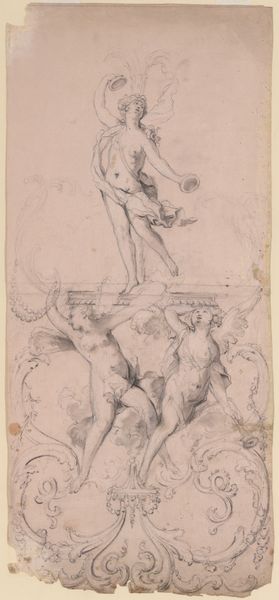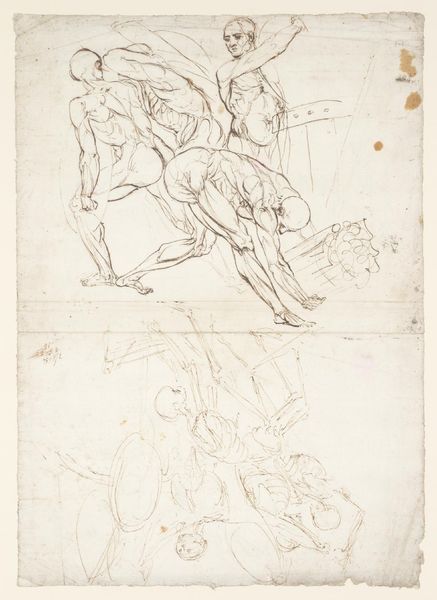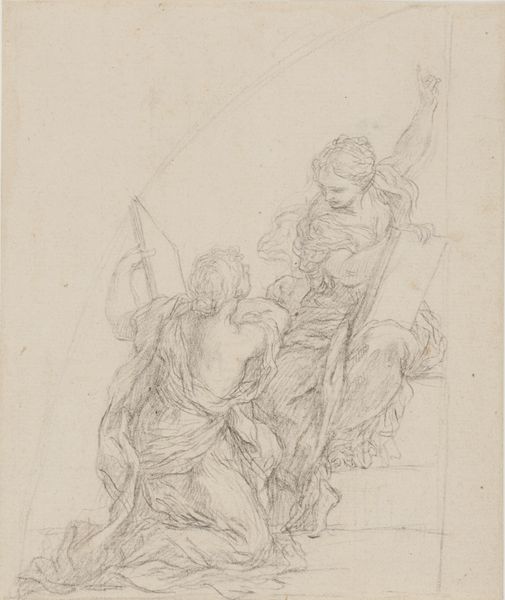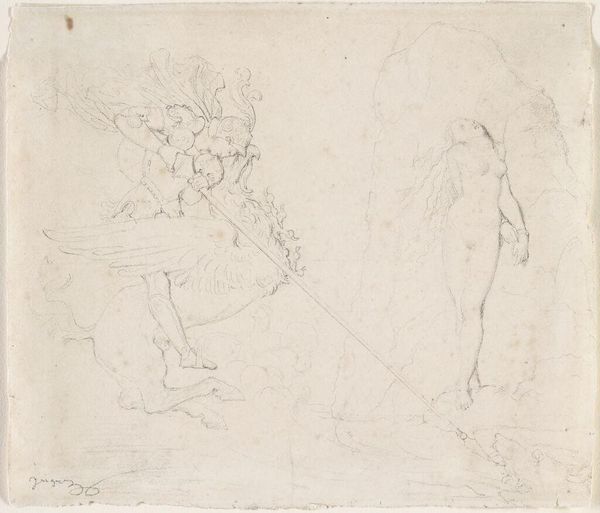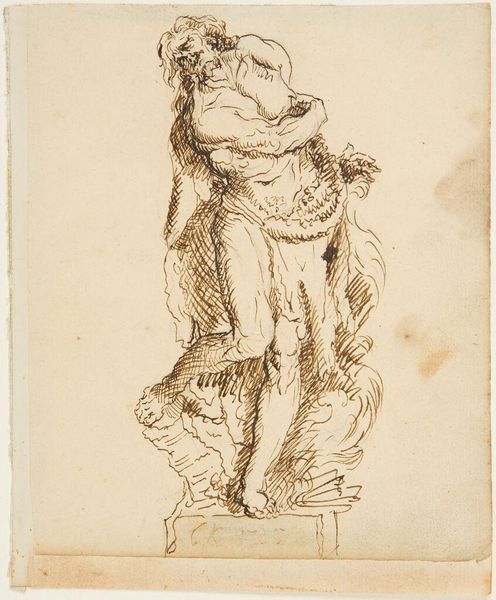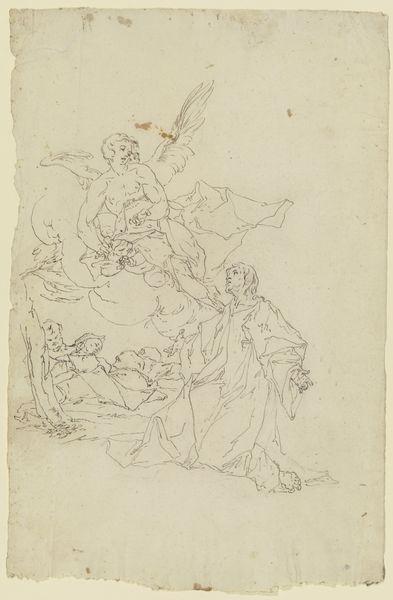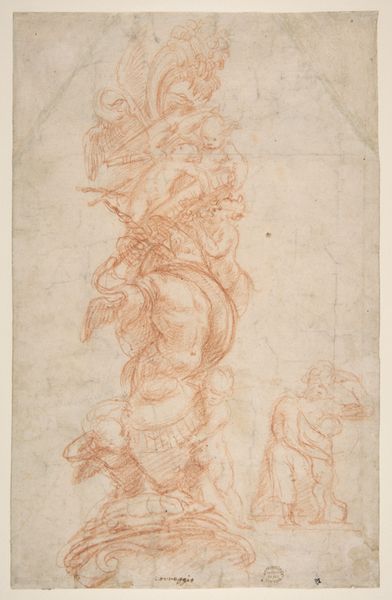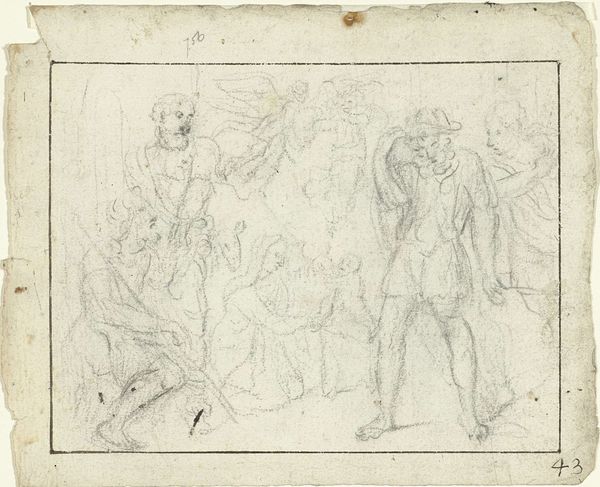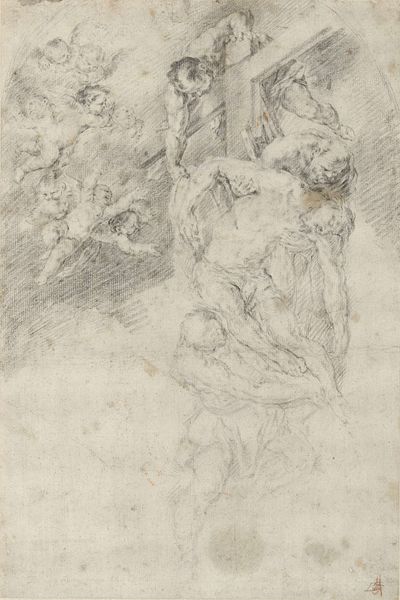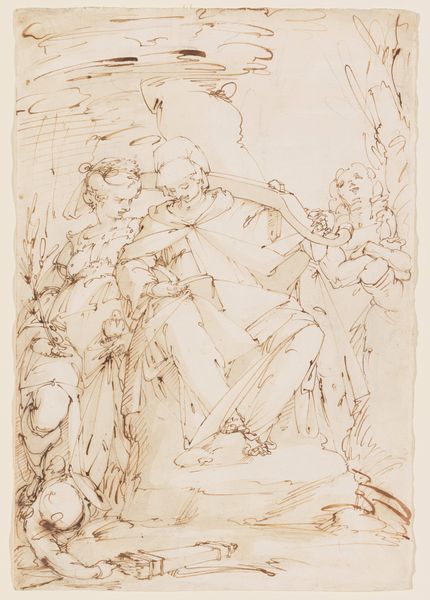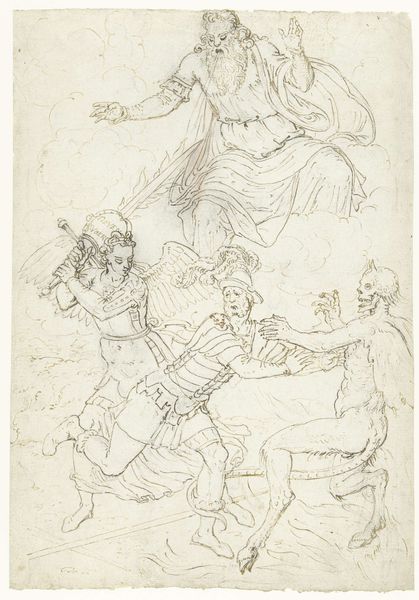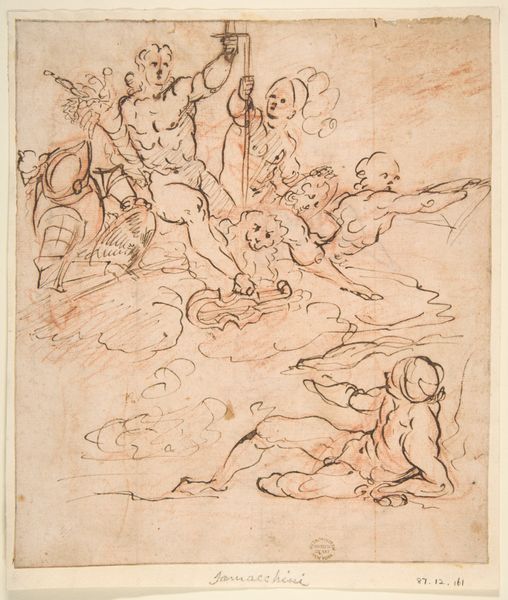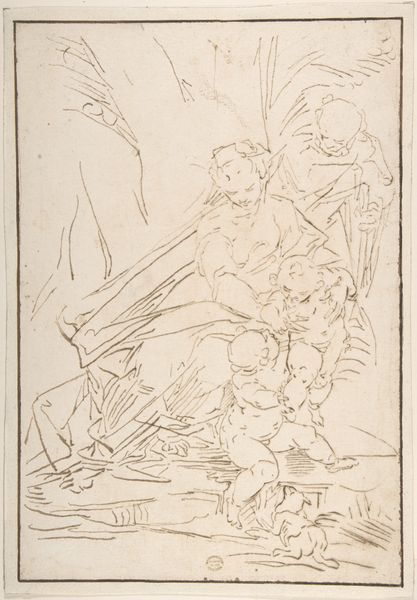
Dimensions: 288 mm (height) x 194 mm (width) (billedmaal)
Editor: Here we have Johannes Wiedewelt's "Fortuna," a pencil drawing from around 1765. It depicts the nude goddess Fortuna bestowing gifts and perhaps stepping on others, rendered in delicate lines. I am struck by the vulnerable and rather ambivalent portrayal of fortune and the recipients’ reactions. What do you see in this piece? Curator: It is fascinating, isn't it? Wiedewelt captures Fortuna at a pivotal moment in history, at the crossroads of Enlightenment ideals and nascent Romantic sensibilities. Notice how her nudity challenges the conventional virtuous representation of the era. But more than just a nude figure, I'd say Wiedewelt critically examines power and its arbitrary distribution. Editor: That makes a lot of sense! Could you elaborate a little more on power distribution? Curator: Of course. Fortuna’s foot resting on a personified figure of misfortune seems particularly pointed, don't you think? Consider how this imagery critiques the social hierarchies inherent in systems of patronage, or the arbitrariness of wealth. Wiedewelt uses classical allegories to reflect upon societal inequalities of the time. Doesn’t the frenzied desire reaching up toward the seemingly indifferent Fortuna say something about desperation for social mobility, or rather the inaccessibility to such mobility? Editor: That's a compelling reading, positioning Fortuna almost as a detached figure presiding over social inequities. Curator: Precisely! Art allows us to see the historical and social realities through multiple lenses. Editor: Thank you, I appreciate understanding how art from the past has value in unveiling power dynamics. Curator: Indeed! It seems we are forever locked in a debate with the past on pressing issues that unfortunately remain current.
Comments
No comments
Be the first to comment and join the conversation on the ultimate creative platform.
